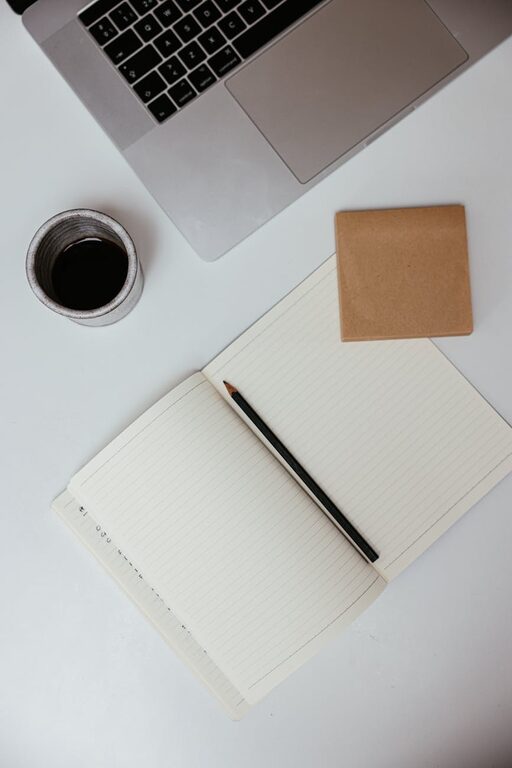Choosing the right notebook might seem like a simple task, but finding one that you’ll actually use consistently can be more challenging. With so many options available, it’s easy to get overwhelmed or end up with a notebook that doesn’t quite fit your lifestyle or preferences. This guide will help you make an informed choice so your notebook becomes a truly useful companion for work, study, or personal projects.
Why Choosing the Right Notebook Matters
A notebook isn’t just a collection of blank pages; it’s a tool for capturing ideas, organizing thoughts, and staying productive. The right notebook should motivate you to write, draw, or plan regularly. If the size, paper quality, or layout isn’t right, you might find yourself avoiding it altogether, wasting both money and effort.
Consider Your Purpose
Before buying a notebook, think about what you’ll primarily use it for. Your needs may differ if you want to:
– Take quick notes in meetings or classes
– Sketch and doodle
– Journal or write creatively
– Plan projects or track habits
– Keep a detailed diary or study notes
Understanding your main purpose helps narrow down features like size, paper type, and layout.
Size and Portability
Notebooks come in many sizes, from tiny pocketbooks to large sketchpads. Here’s what to consider:
– Pocket notebooks (3.5” x 5.5” or smaller): Great for quick notes on the go. Easy to carry but limited space.
– Medium notebooks (5” x 8” to 6” x 9”): Balanced size for daily use, portable yet spacious enough to write comfortably.
– Large notebooks (8.5” x 11” and up): Ideal for detailed work, sketching, or extensive note-taking but less portable.
Think about where and how you’ll use the notebook. If you’re often on the move, a compact notebook fits better in bags or pockets.
Paper Quality and Type
The feel of the paper affects your writing experience. Consider:
– Paper weight: Measured in GSM (grams per square meter). Higher GSM (70-100+) means thicker paper, less bleed-through, and a more premium feel.
– Paper texture: Smooth is nice for pen and pencil, while textured paper suits certain drawing tools.
– Ruled, dotted, or blank pages:
– Ruled lines help with neat handwriting and note organization.
– Dotted pages offer subtle guidance, popular with bullet journals.
– Blank pages allow free drawing and flexible layouts.
If you use fountain pens or markers, choose heavier paper to prevent ink bleeding.
Binding Style
The way a notebook is bound affects how it opens and its durability:
– Spiral binding: Lies flat easily, great for writing on both sides but can be bulky.
– Thread-sewn: Durable and lays flat, often found in higher-end journals.
– Glue-bound (perfect binding): Looks clean but may not open flat.
– Hardcover vs. softcover: Hardcover protects pages better and is sturdier; softcover is lighter and more flexible.
Try different styles to find what feels best in hand.
Design and Aesthetics
A notebook’s appearance can encourage usage. Choose a design that matches your taste, whether minimalist, colorful, or themed. Some prefer classic leather-bound notebooks for a timeless look, others vibrant covers for daily inspiration.
Additional Features to Look For
Depending on your lifestyle, certain extras can boost usability:
– Page numbers and index: For easy reference and organization.
– Built-in bookmarks or ribbon: Quickly find your place.
– Pockets inside the cover: Store receipts, notes, or loose papers.
– Elastic closure: Keeps pages secure during travel.
– Perforated pages: Tear out notes cleanly when needed.
Make a list of must-haves so you don’t overlook them while browsing.
Try Before You Buy
If possible, visit a stationery store and feel the notebooks yourself. Check how the paper feels under your favorite pen or pencil. See if the size is comfortable, and flip through pages to test the binding.
If buying online, read reviews and look for detailed product photos. Many brands offer samples or smaller sizes—sometimes these are worth trying first.
Organizing Your Notebook Use
Once you select the perfect notebook, set yourself up for success:
– Designate a purpose: Keep one notebook per main use to avoid clutter.
– Keep it accessible: Store it where you’ll see or use it frequently.
– Set milestones: Challenge yourself to fill a page or section each day or week.
– Personalize: Add tabs, labels, or decorate covers to stay engaged.
Final Thoughts
Choosing a notebook you’ll actually use is about matching a book to your habits, style, and needs. With thoughtful selection, your notebook can become a trusted tool for creativity, productivity, and organization. Take time to explore options and remember—the best notebook is one that fits your life and inspires you to write more often.
Happy notebook hunting!

